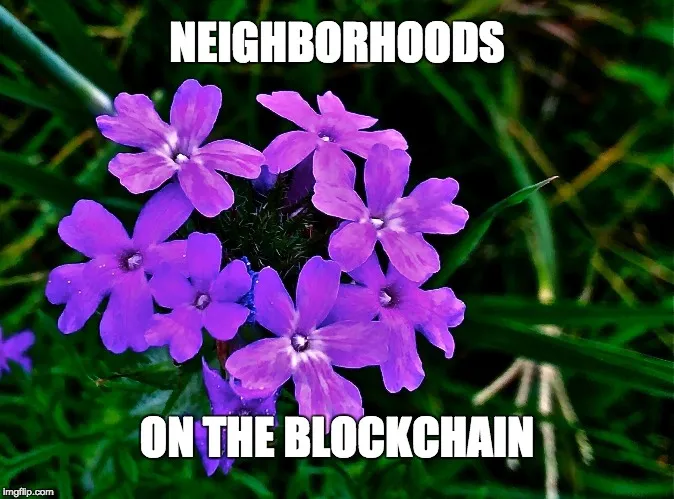My school's engineering department is hosting our first ever Dean's challenge:
to produce a research poster that explains an idea to help Arlington, TX become a "Smart City," such as how to incorporate Internet of Things and streamline transportation.
When I heard the challenge I immediately thought of blockchain technology and how it could be used to make better neighborhoods. Below is a rough draft of my preliminary research findings. The first two main premises come from Christopher Alexander's classic book on architecture, A Pattern Language.

The following is a very rough draft published early in hopes of your feedback!
PROBLEMS WITH NEIGHBORHOODS IN ARLINGTON AND SUBURBIA IN GENERAL:
#1
"Individuals have no effective voice in any community of more than 5000-10,000 persons." (The city of Arlington comprises almost 400k people!)
Read more from A Pattern Language
SOLUTION: COMMUNITY OF 7000: "Decentralize city governments in a way that gives local control to communities of 5,000 to 10,000 persons. As nearly as possible, use natural geographic and historical boundaries to mark these communities. Give each community the power to initiate, decide, and execute the affairs that concern it closely: land use, housing, maintenance, streets, parks, police, schooling, welfare, neighborhood services."
#2
"People will not feel comfortable in their houses unless a group of houses forms a cluster, with the public land between them jointly owned by all the householders."
Read more from A Pattern Language.
SOLUTION: HOUSE CLUSTERS: "Arrange houses to form very rough, but identifiable clusters of 8 to 12 households around some common land and paths. Arrange the clusters so that anyone can walk through them, without feeling like a trespasser."
WHAT STANDS IN THE WAY OF MAKING THESE SOLUTIONS A REALITY FOR ARLINGTON?
I. SPECULATION AND FOR-PROFIT LAND DEVELOPMENT
Big-time investors usually do not share the interests of the communities in which they invest
II. SMALL NEIGHBORHOODS USUALLY HAVE NO LEGAL ENTITY OR CAPITAL TO FURTHER THEIR COMMON INTERESTS OR GAIN COMMON OWNERSHIP OF SURROUNDING LAND
III. CENTRALIZED MUNICIPAL GOVERNMENT HANDLES DECISION-MAKING FOR TOO MANY NEIGHBORHOODS:
Attention to detail and the local needs of each neighborhoods is not possible on such a large scale.
“The process of city administration is invisible to the citizen who sees little evidence of its human components but feels the sharp pain of taxation.”
Read more from A Pattern Language
PROPOSED STRATEGY
I. Create a cryptocurrency and blockchain application that allows residents to take control of their neighborhood repair/improvement projects!
A. Each resident (renters and owners) are allocated proportional shares of a neighborhood-specific coin
The coin is funded in the same way as a municipal bond: investors buy into the neighborhood of interest and are guaranteed a return on their money in x number of years.
Residents can create project proposals and promote neighborhood improvement projects through online media (similar to GoFundMe, except residents/investors are literally buying a share of the neighborhood/project’s success).
Residents will use their crypto shares to ‘vote’ for the project proposals they believe will most benefit the neighborhood, and those crypto-coins will ultimately fund the actual project (in the same way a municipal bond funds public works).
Example: Online voting for neighborhood improvement proposals: Liquid Feedback
Example: Municipal Bonds on the blockchain in Berkeley:
“these coins will actually represent a real security issued for a specific purpose,” said Kiran Jain, COO of Neighborly. “In this case, municipal bonds for affordable housing or homelessness.”
The paper-based municipal bond issuance process as it exists now is complicated, and involves multiple stakeholders. By transferring the whole system to a digital platform, thereby creating a more efficient process, Berkeley is hoping to encourage more residents to invest in social impact projects. The city can create a public ledger that lays out the city’s financial statements transparently, and cuts out the middle man. This reduces the transaction costs normally associated with bond issuances.